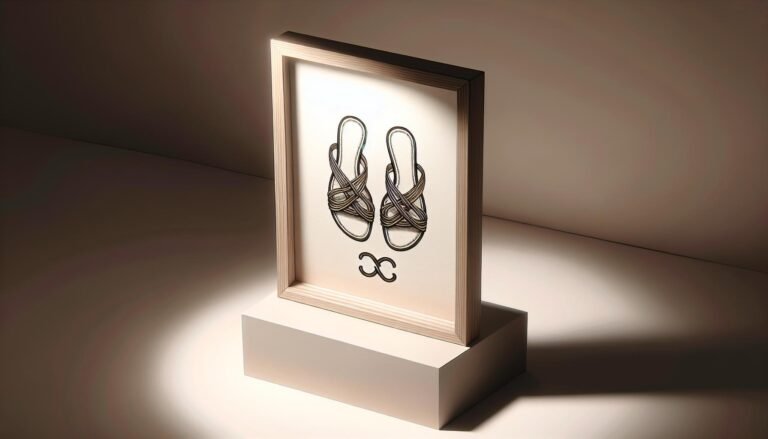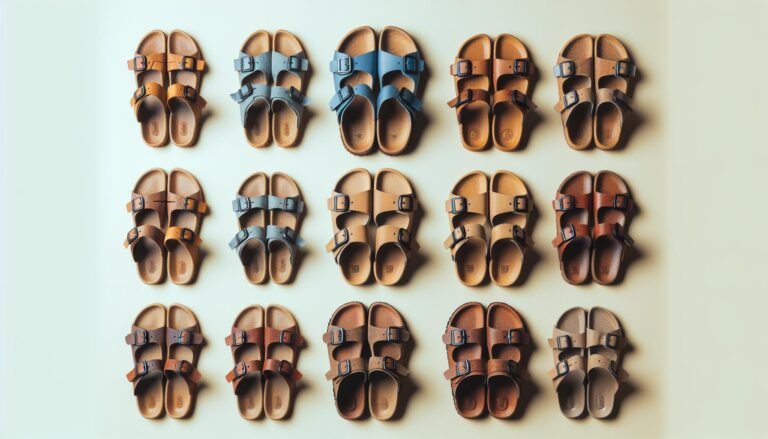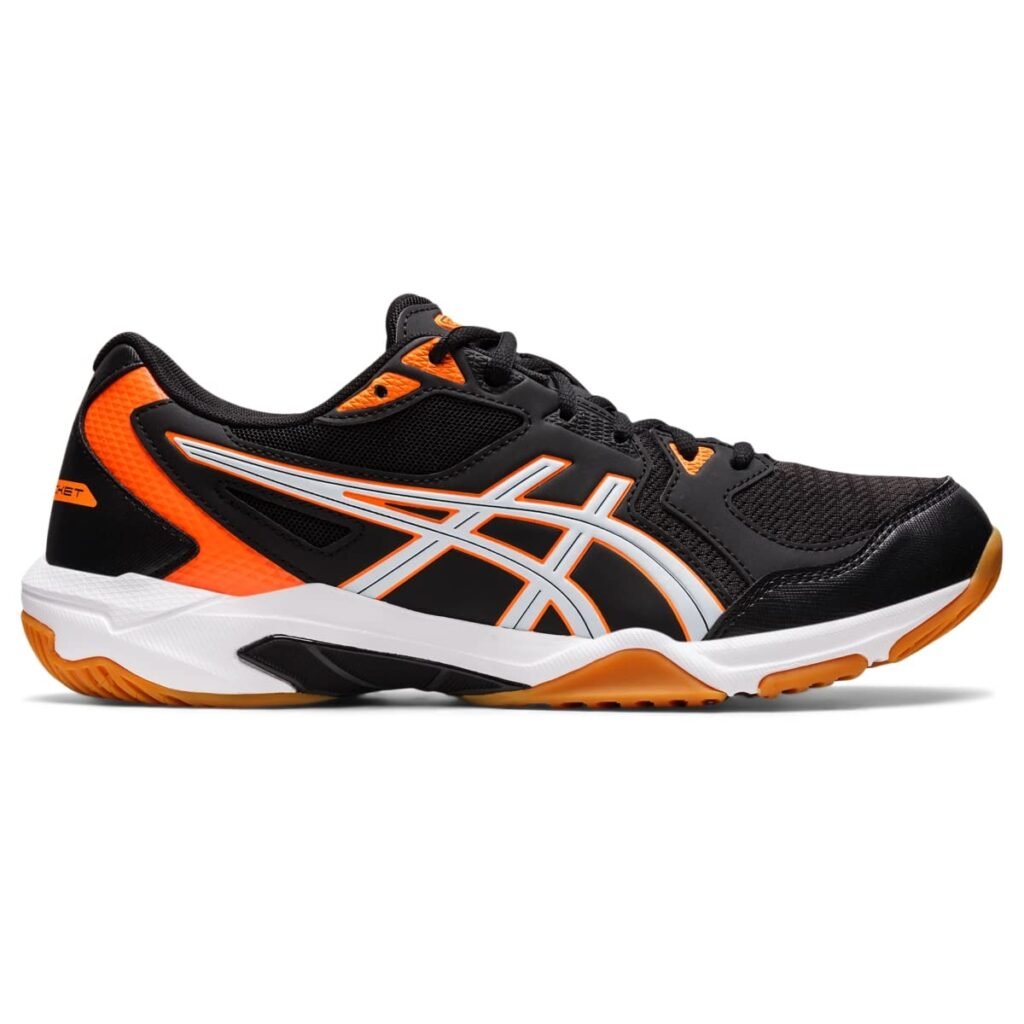Slipper sizes vs Shoe Sizes: Are They the Same?
When I first ventured into the world of comfy footwear, I found myself asking, “Are slipper sizes the same as shoes?” It’s a common question, especially when you’re eyeing that perfect pair of slippers online. After all, nobody wants the hassle of returns, especially for something meant to bring comfort to your feet.
I’ve delved into this topic to bring you a clear answer. Slipper shopping can be tricky, with sizes varying between brands and styles. Understanding the nuances can save you time and ensure your feet find their happy place without any guesswork. Let’s dive into the essentials of slipper sizing compared to regular shoes.
Key Takeaways
- Slipper sizes can significantly vary from regular shoe sizes due to design, material, and brand-specific sizing charts. It’s crucial not to assume your shoe size will directly translate to slipper sizes.
- Always refer to the brand’s sizing chart and take the time to measure your foot for a more accurate fit. Differences among brands in how they size their slippers underscore the importance of this step.
- Customer reviews are invaluable for understanding how true to size a pair of slippers might be. Reviewers often indicate if slippers run large, small, or true to size based on their experience.
- Consider the material and style of the slipper, as some materials like wool or sheepskin may stretch over time, while others may not. This will influence whether you should size up or down.
- Lastly, check the return policy before purchasing. Despite all precautions, there’s always a chance the slippers won’t fit as expected, and a hassle-free return policy can alleviate potential sizing concerns.
Slipper Sizing
When I first delved into the world of slipper shopping, one question that persistently nagged at me was whether slipper sizes align with regular shoe sizes. After thorough research and personal shopping experiences, I’ve gathered insights that I believe will help demystify this for those of you facing the same dilemma.
First and foremost, it’s crucial to understand that slipper sizing can vary significantly not only from brand to brand but also between different styles within the same brand. This variability stems from the unique designs and materials used in slippers which can affect how they fit around your feet. Unlike shoes that are designed to offer precise support and fit, slippers tend to prioritize comfort and ease, leading to a more relaxed sizing standard.
Another aspect to consider is the type of slippers you’re eyeing. For instance, slip-on styles may provide a more forgiving fit, allowing for a bit of size flexibility. In contrast, slippers that feature a full-coverage design or added components like laces might require a more exact match to your standard shoe size to ensure your feet are snug, not squeezed.
To bridge this sizing gap, I’ve found that referring to the brand’s sizing chart is an indispensable step. Many brands offer detailed sizing guides that include foot length measurements corresponding to their slipper sizes. Here’s a basic comparison to illustrate how a general sizing chart might look:
| EU Size | US Size (Men) | US Size (Women) | Foot Length (inches) |
|---|---|---|---|
| 38 | 5 | 7 | 9.25 |
| 39 | 6 | 8 | 9.5 |
| 40 | 7 | 9 | 9.875 |
Taking the time to measure your foot and compare it against the brand’s chart can make a world of difference in finding that perfect fit.
Moreover, customer reviews are a goldmine of information. I make it a habit to sift through feedback from prior buyers which often sheds light on whether a particular style runs large, small, or true to size. This step has saved me from many a sizing mishap.
Variations Among Slipper Brands
When it comes to finding the perfect pair of slippers, I’ve learned the hard way that not all slipper sizes match up to standard shoe sizes. This realization came from exploring various brands, each with its unique sizing chart. It’s crucial to understand that slipper brands often prioritize comfort and style over precise sizing, leading to significant variations in fit.
For instance, while one brand might consider a size 9 to be perfect for someone with a foot length of 26 cm, another might label this as a size 8.5 or even a size 9.5. This lack of standardization can throw you off if you’re not careful. To illustrate this point, I’ve crafted a simple table comparing a few well-known brands:
| Brand | Size 9 Foot Length (cm) | Size 8.5 Foot Length (cm) | Size 9.5 Foot Length (cm) |
|---|---|---|---|
| Brand A | 26 | 25.5 | 26.5 |
| Brand B | 25.7 | 25.2 | 26.2 |
| Brand C | 26.3 | 25.8 | 26.8 |
This table shows how each brand interprets slipper sizes differently, making it all the more important to check their specific sizing guidelines.
My journey through the world of slipper shopping taught me to never assume that my regular shoe size would automatically apply. Instead, I started to carefully review each brand’s size chart and read customer reviews for insights. Many customers will mention if slippers tend to run large, small, or true to size, which can be incredibly helpful.
Moreover, I realized that material and style play a significant role in how slippers fit. A thick, plush material might require going up a size, whereas a more rigid material could mean sticking closer to your actual shoe size. Given these factors, it’s clear that there’s no one-size-fits-all when it comes to slippers.
Tips for Finding the Right Fit
When it comes to tracking down the perfect pair of slippers, size isn’t the only factor you’ll need to consider. Material, style, and brand-specific sizing can all impact the fit. Here’s how I navigate these variables to ensure I’m getting a cozy fit every time.
First off, always refer to the brand’s size chart. I can’t stress this enough. Even if you’re a size 8 in shoes, this doesn’t guarantee you’ll be the same in slippers from that brand. I’ve learned this the hard way more than once. Brands often have their unique sizing, which can vary widely. It’s worth the extra minute to check their specific chart.
Next, read customer reviews. They’re a goldmine of information. Often, previous buyers will mention if the slippers run large, small, or true to size. This has saved me from numerous sizing mishaps. It’s also a great way to get a sense of the slipper’s comfort and quality from people who’ve actually worn them.
Consider the material and style of the slipper. Materials like wool or sheepskin tend to stretch over time, while synthetic materials may not. If you’re eyeing slippers made from stretchy materials, you might want to size down for a snug fit. On the flip side, slip-on styles or those with a high back can sometimes fit more snugly, so you might consider going a size up.
Lastly, don’t overlook the return policy. Even with all this preparation, there’s always a chance the slippers won’t fit as expected. Before I make a purchase, I ensure the store or brand has a hassle-free return policy. This way, if the size isn’t perfect, I can exchange them without additional stress.
Differences Between Slipper sizes and Shoe Sizes

When I’m browsing for a new pair of slippers, one question that frequently comes to mind is whether slipper sizes are the same as shoe sizes. Based on my research and personal experiences, I’ve found that the answer isn’t as straightforward as one might hope. Slipper sizes can vary significantly from standard shoe sizes due to a variety of factors, including the design, material, and manufacturer.
First off, slippers are often designed to be worn in a more relaxed manner than shoes. This means they might have a looser fit, which can affect sizing. For instance, a slipper that’s meant to be worn with thick socks during colder months might be sized more generously than a standard shoe. In contrast, a sleeker slipper intended for warmer weather might fit more snugly. It’s crucial to keep the intended use and style in mind when comparing slipper sizes to shoe sizes.
Another important factor to consider is the material from which the slippers are made. Materials like wool or sheepskin tend to stretch over time, potentially altering the fit after several wears. This isn’t usually the case with the materials commonly used in shoes, which are designed to maintain their shape better over time. Therefore, when transitioning from shoe sizes to slipper sizes, it might be wise to consider how the material will behave.
Lastly, brand-specific sizing plays a significant role in the discrepancy between slipper and shoe sizes. Just as with shoes, every slipper brand may have its own unique sizing chart. This means a size 9 in one brand’s shoes could be vastly different from a size 9 in their slippers—or compared to another brand’s slippers. It’s always recommended to consult the brand’s specific size guide or read customer reviews to get a better understanding of how their sizes run.
While there might be a temptation to assume that slipper sizes directly correlate with shoe sizes, several factors such as fit preference, material, and brand-specific sizing considerations suggest otherwise. Paying attention to these differences can greatly enhance the chances of finding the perfect pair of slippers.
Navigating the world of slipper sizes doesn’t have to be a daunting task. I’ve learned that while they may not always align with shoe sizes, understanding the nuances of slipper design, material, and brand-specific sizing can significantly ease the selection process. Remembering that slippers are meant for comfort and may have a more relaxed fit is key. So next time you’re in the market for a cozy pair, keep these insights in mind. They’ll not only help you find slippers that fit like a dream but also enhance your overall comfort and satisfaction. Happy slipper shopping!
Frequently Asked Questions
Why do slipper sizes vary from shoe sizes?
Slipper sizes can differ from shoe sizes because slippers are often designed for a more relaxed fit, and their sizing can be impacted by their design, material, and the specific brand. Unlike shoes, slippers are created for comfort and may not adhere strictly to standard shoe size guidelines.
How do materials like wool or sheepskin affect slipper sizing?
Materials such as wool or sheepskin can stretch over time, impacting the sizing of slippers. These natural materials adjust to the shape and size of the foot, potentially causing slippers to feel looser with prolonged use. Therefore, considering material characteristics when selecting slipper size is important.
Should I consider the brand’s sizing chart when buying slippers?
Yes, considering the brand’s specific sizing chart when purchasing slippers is crucial. Since each brand may have its unique approach to sizing, relying on the brand’s sizing chart will increase your chances of finding a pair of slippers that fits well, accounting for variations in design and material.
Should I consider the brand’s sizing chart when buying slippers?
Yes, considering the brand’s specific sizing chart when purchasing slippers is crucial. Since each brand may have its unique approach to sizing, relying on the brand’s sizing chart will increase your chances of finding a pair of slippers that fits well, accounting for variations in design and material.
How can I ensure a good fit when selecting slippers?
To ensure a good fit when selecting slippers, consider your fit preference (snug vs. loose), the material of the slippers and how they might stretch or change over time, and consult the sizing chart specific to the brand you’re interested in. These factors will help in selecting slippers that are comfortable and well-fitted to your feet.












